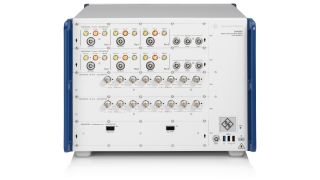Metaverse and extended reality (XR)
Extended reality (XR) serves as an umbrella term encompassing virtual reality (VR), augmented reality (AR), and mixed reality (MR). This innovative concept integrates the physical and digital realms, effectively diminishing the distinction between actuality and technology.
By integrating and expanding upon the capabilities of VR, AR, and MR, a wide spectrum of possibilities emerges for virtual environments, significantly enhancing user experiences across various sectors:
- Training and Education: Offers highly interactive and immersive simulations that merge physical and virtual learning spaces, revolutionizing how education and training are conducted.
- Collaboration: Facilitates hybrid office setups and immersive meeting environments, bolstering remote collaboration and allowing for virtual participation and interaction, thus transforming traditional workspace dynamics.
- Digital Twins: Empowers the remote control of machinery in sectors like manufacturing, logistics and warehousing, providing a virtual replica of physical assets for improved operation and analysis.
- Gaming and Social Settings: Elevates home entertainment through immersive gaming and social experiences, offering a new level of engagement and interaction in virtual settings.
















